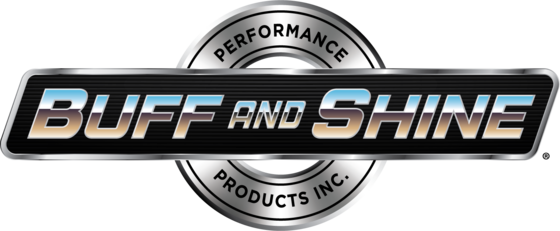6" Flex Edge Grip Backing Plate
658XS
It's a new buffing world out there, even for the classic simple rotary (high-speed) machine. Some technicians have transitioned to the use of thinner buffing pads, like our Micro Fiber and Low-Pro Pads. Buff and Shine's new Thick Flexible Backing Plate is an ideal match for these and other pads. Available in three sizes for all your buffing needs. Constructed with an 1" thick polyurethane layer, the Thick Flexible Backing Plate can offer dramatically increased flexibility that can make up for the loss of flexibility that is sometimes experienced with thin buffing pads. This allows the technician who loves the performance of thin pads to also enjoy the capability of working contours in the vehicle surface that are otherwise more difficult to reach with traditional backing plates.
You will find that the Thick Flexible Backing Plate allows superior control and distribution of pressure over body style lines. It provides virtually 100% surface contact across contours while reducing the potential for damage to protruding body style edges. The highly-beveled pad edge allows for "working into" the deepest body line recesses.
The 7" diameter size is great for use with a traditional rotary buffer on larger open surface areas or vehicle painted panels like hoods and trunk lids. The 5" diameter size is great for smaller panels and those with heavy contouring. The 3" size is perfect for buffing tight areas with your favorite smaller rotary polisher (but it also works even with traditional-sized rotary buffers!). Use the 3" size for working on headlight lens restoration.
As with all Buff and Shine backing plates, the Thick Flexible Backing Plate is constructed with the highest quality materials and designed to provide countless hours of use, even with the abuse that a rotary polisher can dish out!
Related Items
3" Grip Backing Plate
Our re-engineered high quality backing plates for high speed buffing were developed with our 20 years of past expertise in the field. These Plates are top performers that are guaranteed to keep your customers happy.
- Diameter: 3"
- Thickness: .5"
- Thread: 5/8" x 11"
- Max RPM: 3000
3" Backing plate with 14mm threads
Our re-engineered high quality backing plates for high speed buffing were developed with our 20 years of past expertise in the field. These Plates are top performers that are guaranteed to keep your customers happy.
- Diameter: 3"
- Thickness: .5"
- Thread: 5/8" x 11"
- Max RPM: 3000
7" Rigid & Flex Edge Grip Backing Plate
- Diameter: 7"
- Thickness: 1"
- Thread: 5/8" x 11"
- Max RPM: 3000









